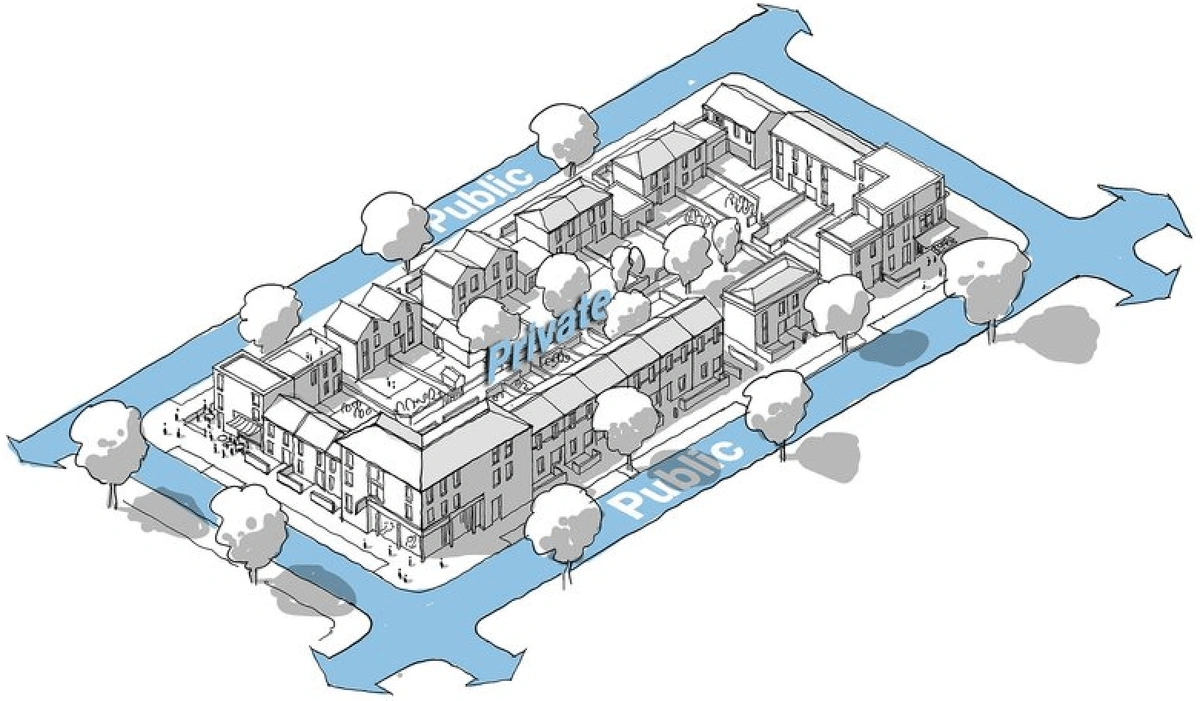The Labour Party, under the leadership of Keir Starmer, has introduced a transformative set of reforms aimed at addressing the UK’s chronic housing shortage and reinvigorating the national planning system. These reforms come at a critical time as housing availability, affordability, and the effectiveness of the planning process have become significant political and social issues. Labour’s ambitious goal of delivering 1.5 million new homes over the next five years reflects its commitment to solving the housing crisis and improving access to homeownership for younger generations. At the heart of this strategy is a focus on affordable housing, streamlined planning processes, and the controversial introduction of new classifications for land development.
We will delve into the key aspects of Labour's planning reforms, exploring the implications for housebuilding, land use, and how the government aims to meet its ambitious targets.
Download the latest Professional Mapping
The Housing Crisis and Labour’s Response
The UK’s housing crisis has been a pressing issue for over a decade, with demand far outstripping supply. A combination of factors—including population growth, limited land availability, and restrictive planning policies—has led to a significant shortfall in new homes, pushing prices up and making homeownership increasingly unaffordable for many. The problem is particularly acute in urban areas, where property prices have soared, leaving many young people and low-income families locked out of the housing market.
Labour’s response is to implement mandatory housing targets for local councils, ensuring that local authorities meet their housing obligations. This policy marks a reversal from the previous Conservative administration, which had downgraded housing targets to advisory status, resulting in many councils delaying or avoiding development altogether. Labour’s plan is designed to make housing delivery a national priority, particularly in areas where prices are high and demand is unmet.
In addition to meeting immediate housing needs, Labour’s new town initiative is designed to create long-term, sustainable communities. These towns will be developed with careful planning, ensuring they have ample green spaces, reliable transport links, and vibrant local economies. These new communities are intended to alleviate pressure on existing towns and cities while providing more housing options outside of the usual urban centres.

Planning Reform and the National Planning Policy Framework (NPPF)
Central to Labour’s reforms is the overhaul of the National Planning Policy Framework (NPPF). The new NPPF updates focus on simplifying the planning system to make it more efficient and responsive to modern housing needs. One of the most significant updates is the introduction of the grey belt, a classification for lower-quality greenbelt land that can be repurposed for development.
The grey belt includes previously developed land, such as derelict industrial sites or disused car parks, which may not serve significant environmental or recreational purposes. By allowing development on this land, Labour seeks to meet housing needs without sacrificing valuable greenbelt areas. This approach has been welcomed by developers as a pragmatic solution to the housing shortage, particularly in high-demand areas like Greater London. However, it has also sparked concerns from environmental groups and local communities who fear that greenbelt protections could be eroded over time.
Additionally, Labour’s updated NPPF restores the requirement for local planning authorities to demonstrate a five-year housing land supply (5YHLS), which had been relaxed under the previous government. This measure is aimed at holding councils accountable for ensuring there is enough land available to meet future housing demands, thus speeding up the delivery of new homes.
Labour’s planning reforms also include a provision for a “planning passport” to accelerate development on brownfield sites, particularly in urban areas. This fast-track approval process for high-density housing is expected to be particularly beneficial in cities like London, where space is limited, and housing demand is high.
Affordable Housing: A Key Priority
Labour’s commitment to affordable housing is one of the central pillars of its planning reforms. Under the new grey belt policy, 50% of homes built on these sites must be affordable. This is one of the most ambitious affordable housing targets in recent UK history, ensuring that newly built homes are accessible to a wider range of people, particularly first-time buyers and low-income families. This policy is part of a broader effort to address the significant affordability gap that has left many people unable to buy homes in their local areas.
In addition to affordable housing targets, Labour has proposed reforms to Section 106 agreements, which govern the contributions that developers must make to affordable housing and infrastructure improvements. The goal is to make these negotiations more transparent and effective, ensuring that developers fulfil their obligations and that local communities benefit from new developments(
Social housing will also see a major boost under Labour’s reforms, with new funding mechanisms and more flexible use of government programmes designed to ensure that social housing projects are delivered alongside private developments.
Image credit: The Guardian
Addressing Challenges: Supply Chain, Labour Shortages and Local Opposition
Despite Labour’s goals, several challenges could impede the success of these reforms. The construction industry is currently facing significant supply chain constraints, which have led to increased costs for building materials and delays in project timelines. Additionally, the UK is experiencing a shortage of skilled workers in the construction sector, further complicating efforts to meet Labour’s housing targets.
Moreover, while the grey belt policy could unlock significant areas for development, it is likely to face strong opposition from environmental groups and local residents concerned about the loss of green spaces. Balancing the need for housing with the protection of the environment will be one of Labour’s key challenges moving forward.
Other Recent Planning News in the UK
In addition to Labour’s reforms, there have been other significant updates in UK planning policy recently:
-
New Homes Accelerator: A government-backed programme to speed up housing delivery. The initiative is aimed at addressing the reasons behind the slow pace of national housebuilding by providing support to developers and local authorities to remove blockages in the planning process. The Accelerator is also designed to uncover why many homes with planning permission have yet to be built.
-
Energy Storage Projects: With the UK’s commitment to achieving net-zero carbon emissions by 2050, planning permissions for renewable energy storage systems have become more frequent. For example, South Gloucestershire Council recently approved a 99MW battery storage project, which will help store renewable energy and supply it to the grid during peak demand.
-
London’s Housing Target: The London Plan is undergoing a review, with Labour raising the city’s annual housing target to 81,000 new homes, up from the previous target of 62,000. This reflects the increasing housing demands in the capital and is supported by Labour’s wider national efforts to boost housebuilding.
Image credit: NMDC/ URBED
Labour’s planning reforms represent one of the most significant shifts in UK housing policy in decades. With the introduction of the grey belt, reinstating mandatory housing targets, and overhauling the planning process, Labour aims to address the housing shortage and ensure that more homes are built across the country. However, the success of these policies will depend on overcoming various challenges, including supply chain disruptions, labour shortages, and local opposition to development.
In addition to Labour’s ambitious housing goals, recent updates such as the New Homes Accelerator and energy storage projects highlight the broader shifts in UK planning policy aimed at meeting the country’s future housing and sustainability needs. As the government moves forward, the balance between development and environmental protection will continue to be a critical issue.

